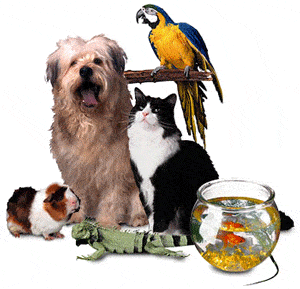
by Lisa J. Lehr
Nevada County is a very pet-friendly place. Most of us here have one or more pets. And pets, over the generations, have enjoyed a status upgrade from outdoor animal to family member, albeit one who lies under the table at mealtime rather than sitting in a chair like the other family members. Many people—including me—believe that a family without pets is incomplete, and a childhood without the experience of raising pets is a disadvantaged childhood.
That experience, though, almost invariably includes the death of a pet. It’s a fact that most people outlive most types of pets; almost all children who have a pet will, at some point, lose one. As difficult as it is for the kids—not to mention for the parents who must explain death—it’s an important life experience.
Sadly, some parents try to spare their kids the pain of losing a pet with some type of coverup—by offering another explanation for the pet’s disappearance, or by concealing the death entirely. The first scenario, mostly used with dogs and cats, usually involves saying it “ran away.” The “ran away” story is offered either when the pet is known to be dead, and the parents have discreetly disposed of the body; or when a pet has disappeared, its fate unknown. Bad things sometimes happen when pets go outdoors, and sometimes old or ill pets will go away to die alone.
The second coverup method is most often used with small pets—fish, turtles, reptiles, perhaps rodents. In these cases, the parent removes the deceased pet while the kids are at school or asleep, replacing it with a similar one and hoping the kids won’t notice.
While beliefs about the afterlife and where pets “go” when they die may differ, and parents are entitled to some leeway when it comes to this subject, saying that the pet “ran away” does more harm than good. Death, as difficult as it is, is final. It offers closure. It’s part of the denial, anger, acceptance cycle that the experts agree we go through in loss. “The pet ran away” leaves kids vulnerable to false hopes and endless, unresolved speculation about what might have happened to the pet.
Why doesn’t he come home? Doesn’t she love us anymore? Is he hurt? Cold? Hungry? Is someone holding her prisoner? Did he find someone else he likes better? Why? Is my doggy or kitty ever coming home? Shouldn’t we be trying to find him? Why aren’t Mom and Dad as anxious to find her as I am?
Eventually, the child will be old enough to figure it out. Or enough years will have gone by that the pet couldn’t possibly be still alive, and the child gives up hope. But there’s no real closure. And that spoils the memory of the relationship they had.
That’s cruel.
If you know what has happened to the pet, and it’s something upsetting—e.g., it was hit by a car or attacked by another animal, and you have found the remains—the truth can be somewhat softened for younger kids. You don’t have to tell the whole truth. If your pet has simply disappeared, however, make every effort to find it! It’s amazing how often a lost pet will turn up just a few doors down, simply because the owner never bothered to put up “lost pet” signs. And if your pet has been taken in by some kind person, her or she will happily stay in the new home and forget about you. Your child, however, doesn’t forget.
Swapping dead pets for new ones is an insult to the child’s intelligence. Parents may get away with it for a while, but doing so simply postpones the inevitable and difficult “death” question. If a child experiences the death of a pet before that of an important person (a grandparent, for example), he or she is better prepared for this bigger loss. Interfering with this natural life lesson will only make the harder lessons…harder.
Here are some ideas for helping kids cope with the death of a pet:
- Hold a funeral. If it’s a small pet, bury it in your yard. If it’s a large pet (or if it’s deep winter and the ground is frozen), you may need to have him or her “cared for” by your veterinarian. If the pet has gone missing and there is no body, have a service anyway. Place a memorial marker in your yard. Let each child say something about the pet. Pray if it’s appropriate to your belief system.
- Make a memory book. Include pictures of the pet, her tags and other mementos. Let the children contribute drawings, poems, or stories about the pet’s life.
- Display pictures of the pet around the house to assure the kids that the pet hasn’t been forgotten.
- Encourage children to talk about the deceased pet. Never suggest that they “get over it” or forget about it.
- Wait a while before getting a new pet. The child may not be ready to transfer his or her affections, and may even resent the new pet for not “being” the old pet.
- Strenuously resist any temptation to “fool” the kids by rushing out and getting a new lookalike turtle, fish, mouse, etc.
So when your family experiences the loss of a pet, take the opportunity to teach your children or grandchildren how to deal with death. Deep-six the “ran away” story. Fido or Fluffy or Buddy or Tinkerbell died. Went to doggy or kitty Heaven, crossed the Rainbow Bridge, returned to Mother Earth—whatever fits with your beliefs. But never say it ran away, unless you know for certain that it did. And never pull the pet-switch trick.
Lisa J. Lehr is a writer and copywriter as well as animal lover living in Grass Valley. She can help you promote your business with a full range of online and offline marketing pieces. A member of Empire Toastmasters, she’s available to speak to your business or professional group. Visit her website www.justrightcopy.com for more information, opt in for a message series, and receive a free Marketing Guide.
—
Lisa J. Lehr
I write words that make you money–just ask me how.
www.justrightcopy.com
Visit my website and sign up for my fr~ee marketing tips.
New! No~cost Marketing Guide now available at my website.








